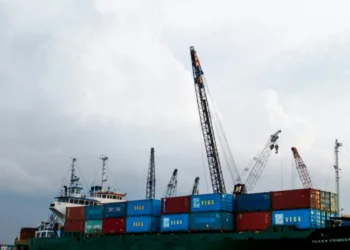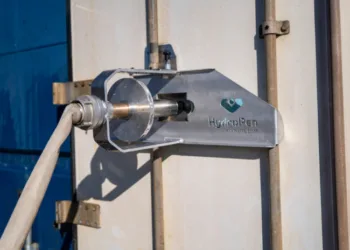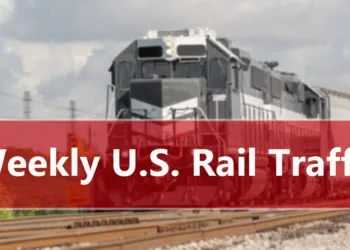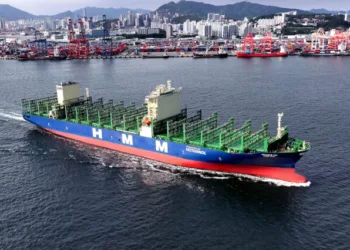Global shipping continues to experience significant fluctuations, influenced largely by the U.S. tariff strategy involving numerous trading partners, with the situation surrounding China remaining a major focal point.
Recent developments in U.S. tariff policies have drawn considerable attention to ocean freight rates, marking a momentous shift in shipping dynamics, said analyst and SONAR data contributor Freightos in an update.
The Freightos Baltic Index saw Asia-U.S. West Coast rates fall 8% to $3,124 per forty foot equivalent (FEU) for the week ending July 4, while Asia-U.S. East Coast prices dropped 16% to $5,159 per FEU.
SONAR’s Inbound Ocean TEUs Volume Index (IOTI.USA) as of July 8 surged ahead of 2022-2024 levels.
President Donald Trump recently signed an executive order extending the pause on reciprocal tariff rollouts for several U.S. trading partners until August 1. This extension offers a brief respite from imminent tariff hikes and allows additional time for negotiations that aim to reduce or completely avoid these increases. Notably, the existing tariffs with China will remain unchanged until their current expiration on August 11. This pause has subtly impacted the overall volume and direction of international shipping activities.
Significant frontloading of goods from various countries was observed before the anticipated tariff hikes, especially from China due to previous tariff levels that went as high as an embargo-like 145%. This frontloading led to an overall slump in U.S. ocean imports during April and May, with trans-Pacific container rates maintaining stability, and at times, decreasing due to strategic blanked sailings by carriers. However, any potential spike in shipping activities in July is expected to be muted because of the short timeframe until the pause’s expiration.
Trans-Pacific spot rates from Asia to the U.S. West Coast saw a marked reduction, falling 8% during the week ending July 4 to $3,124 per forty foot equivalent unit (FEU), and further dropping to $2,390 per FEU. This represents a decline of 60% from just three weeks prior when rates were as high as $6,000 per FEU.
Similarly, East Coast rates have fallen by 30% since mid-June to $4,900 per FEU, though they remain above their March-to-May levels, reflecting limited capacity additions on this route compared to the West Coast’s quicker transit options.
In terms of capacity adjustments, carriers are making strategic decisions to combat decreasing demand and falling rates. Planned general rate increases (GRIs) have been abandoned or reduced, with many carriers opting to remove capacity in attempts to stabilize market conditions and halt the decline. This strategic reduction in vessel availability is intended to align capacity with dropping demand and prevent further rate deterioration.
Rates on Europe trades have been influenced by relatively steady peak season demand coupled with ongoing congestion at key container hubs. Despite an overall reasonable demand, rates remain below last year’s peak, driven down by continual fleet growth and substantial scheduled capacity on the Asia-North Europe lane. Carriers are reportedly planning to increase blankings, reducing scheduled capacity even amid typical peak season increases, to stabilize rates, which have risen 14% to $3,384 per FEU last week but remain significantly below the previous year’s highs.
Find more articles by Stuart Chirls here.
Related coverage:
June rebound as West Coast containers best East, Gulf ports
Port Newark opens new electric drayage charging station
Italy shipbuilder appoints new US chief
Crowley adds new U.S. Northeast ocean service with Central America
The post Tariff pauses ‘unlikely’ to halt tumbling trans-Pacific rates: Freightos appeared first on FreightWaves.






















